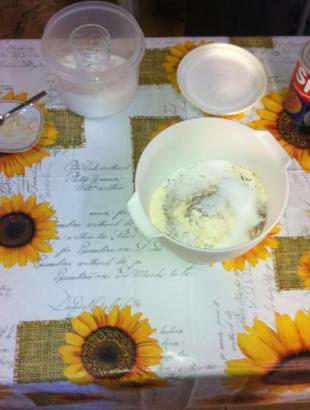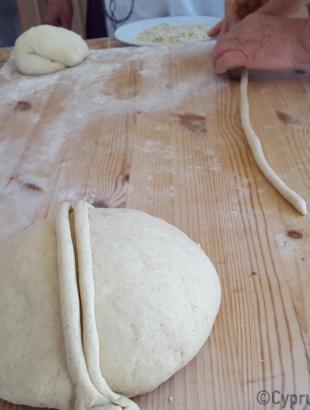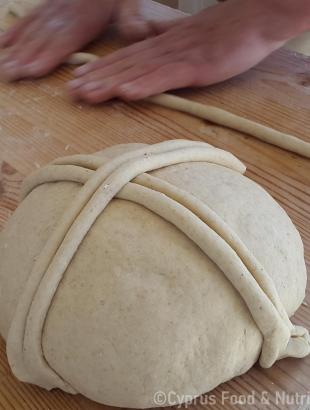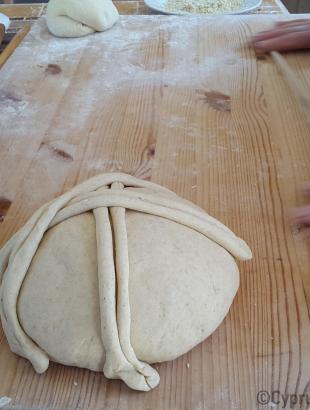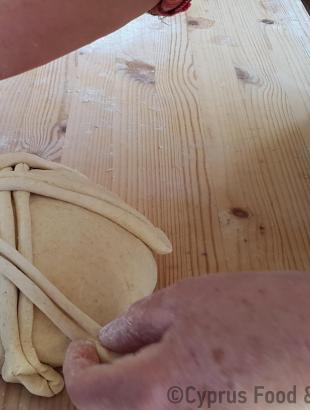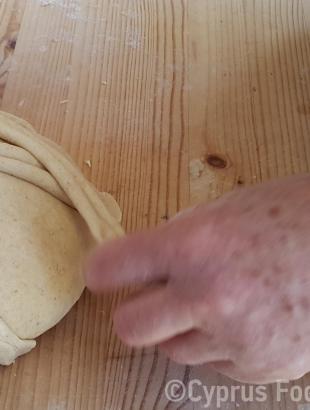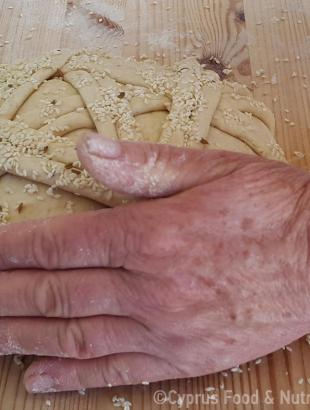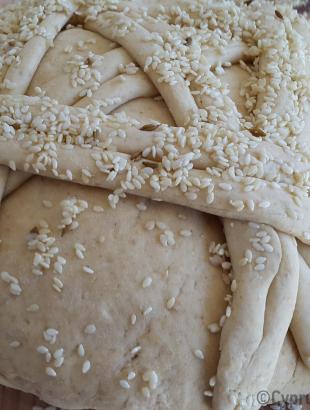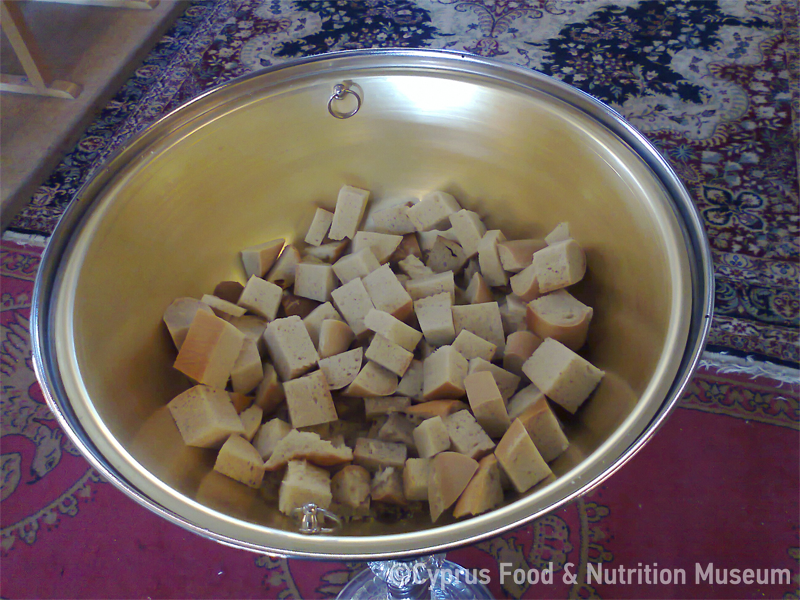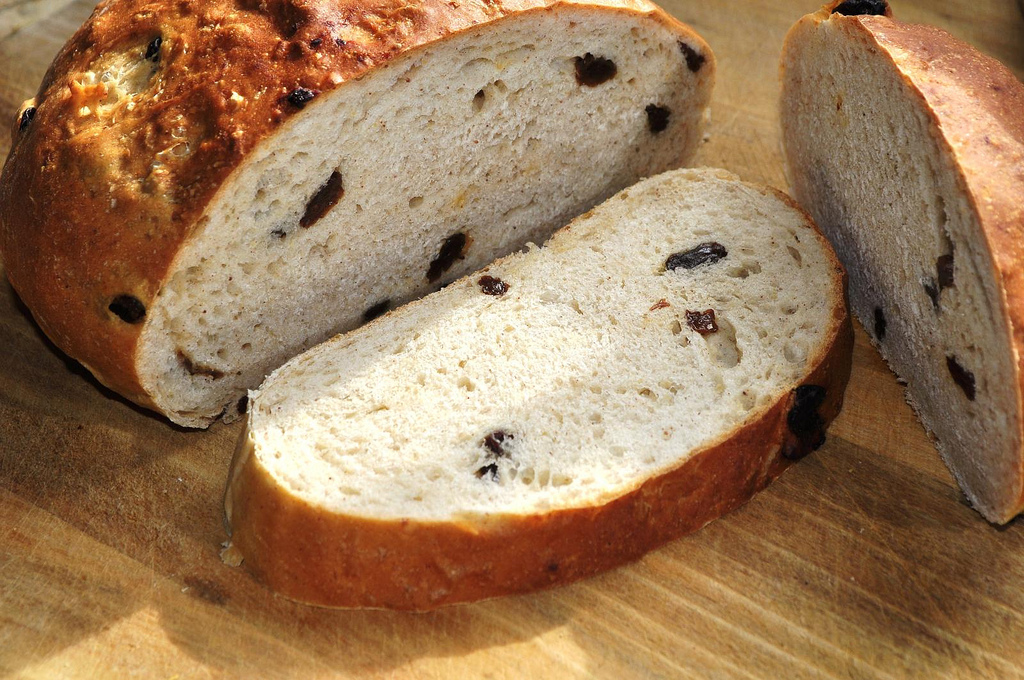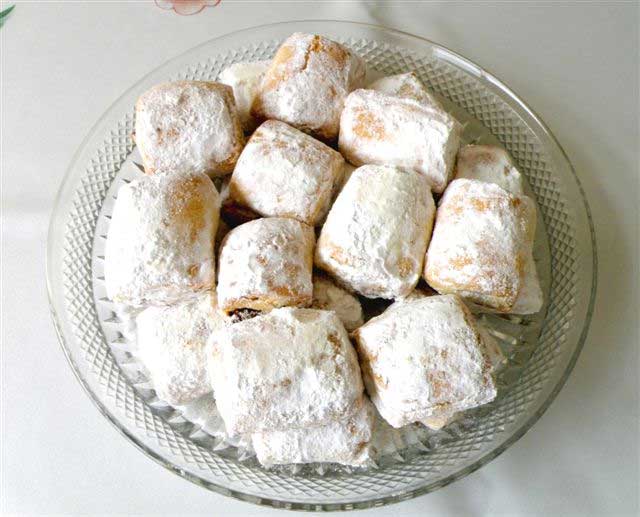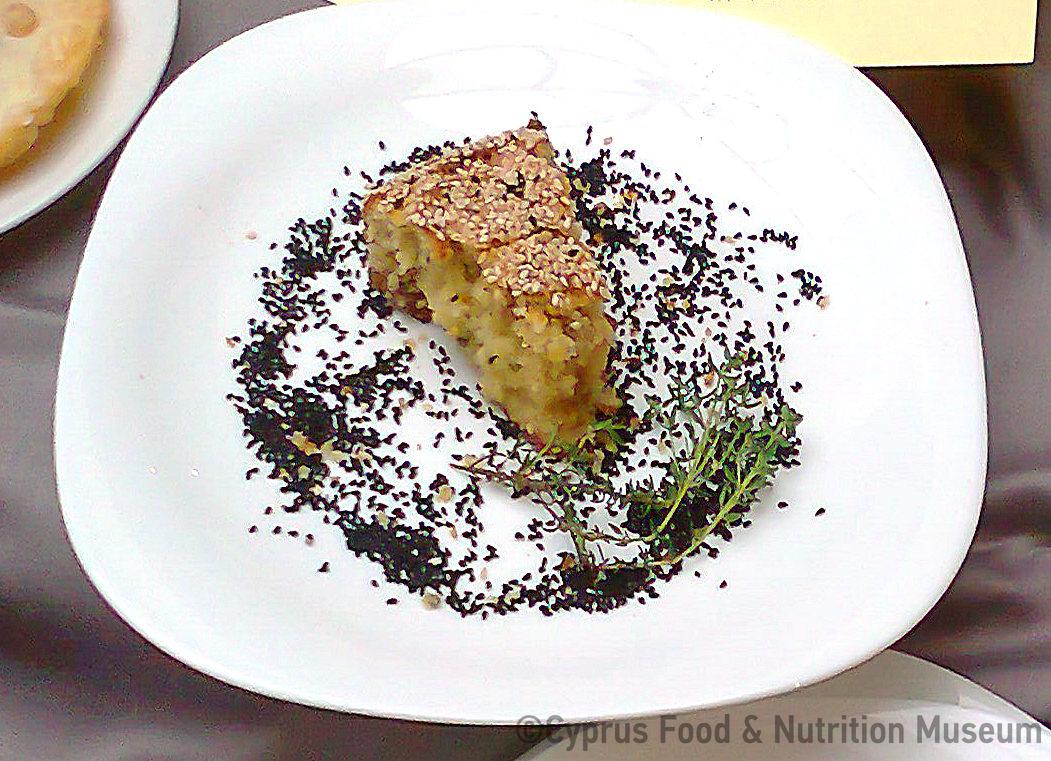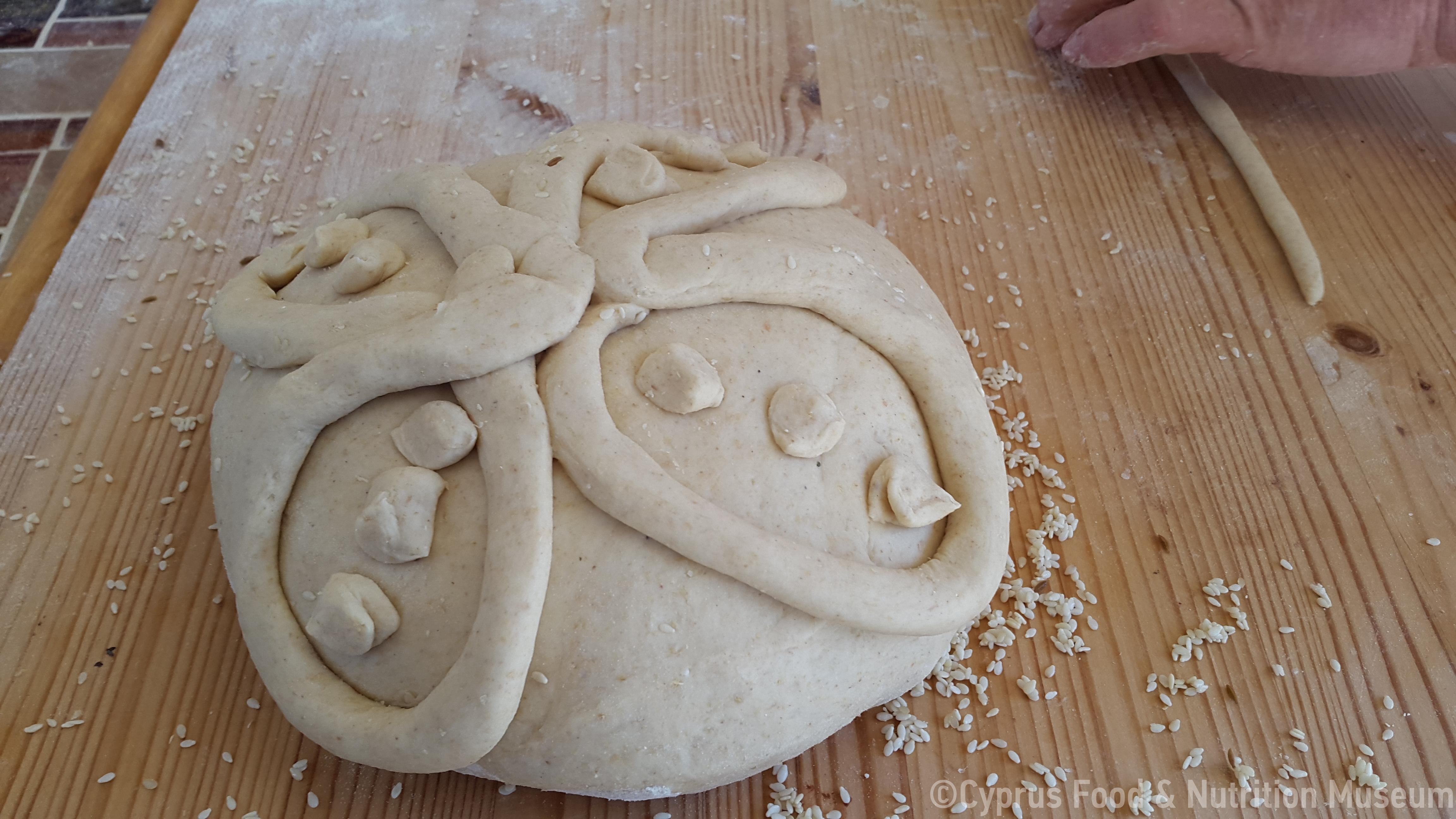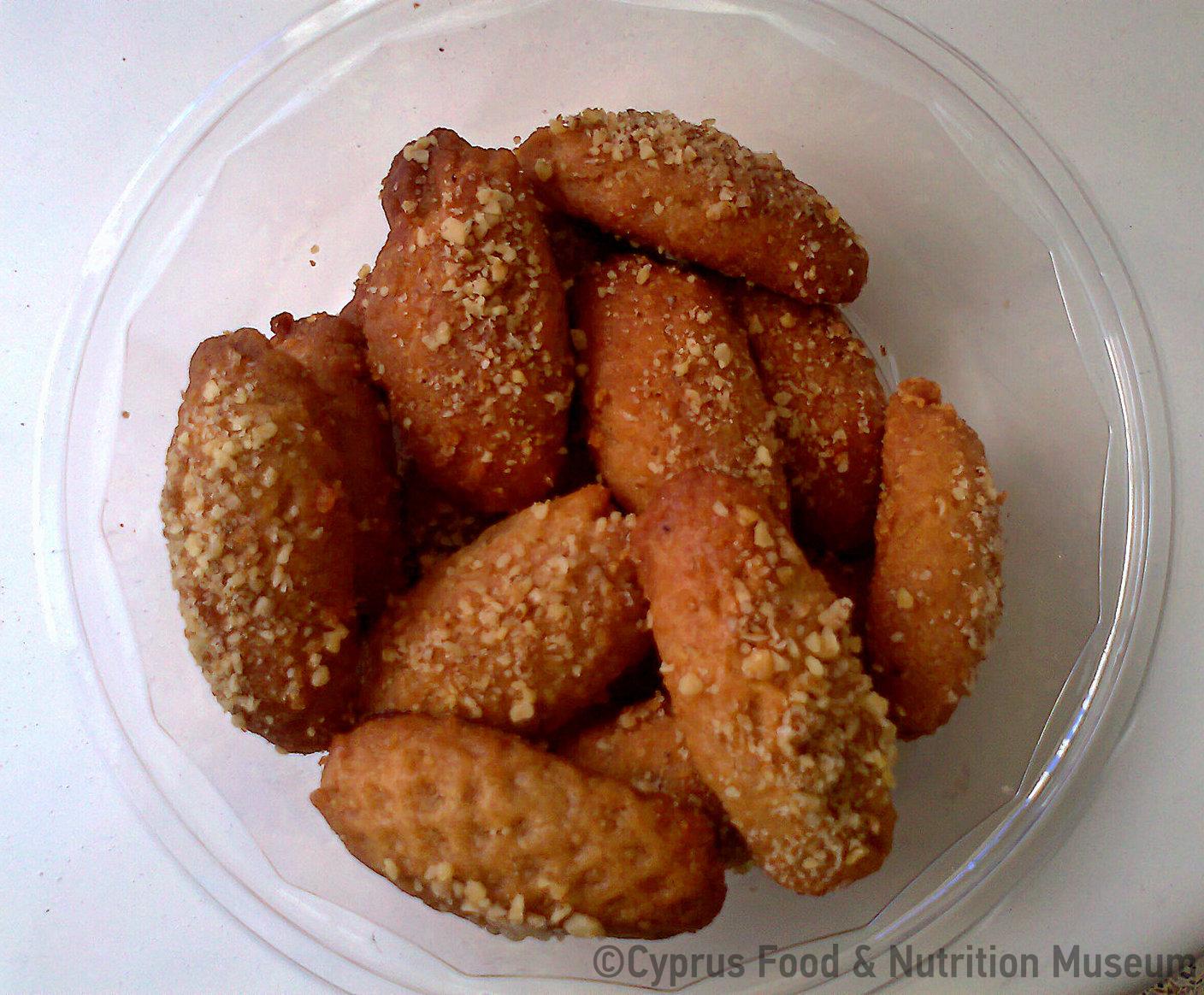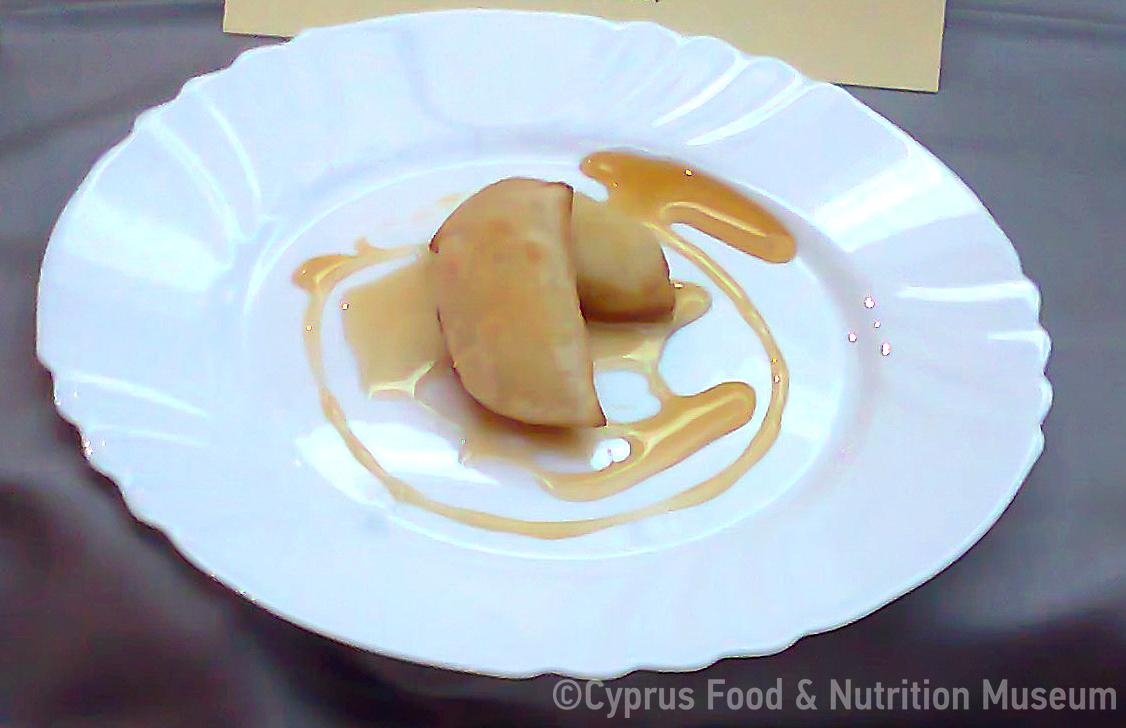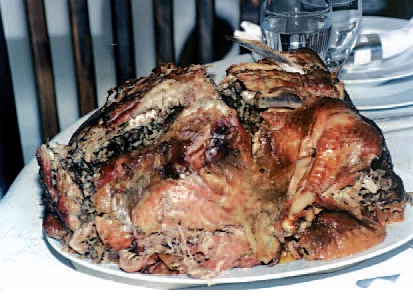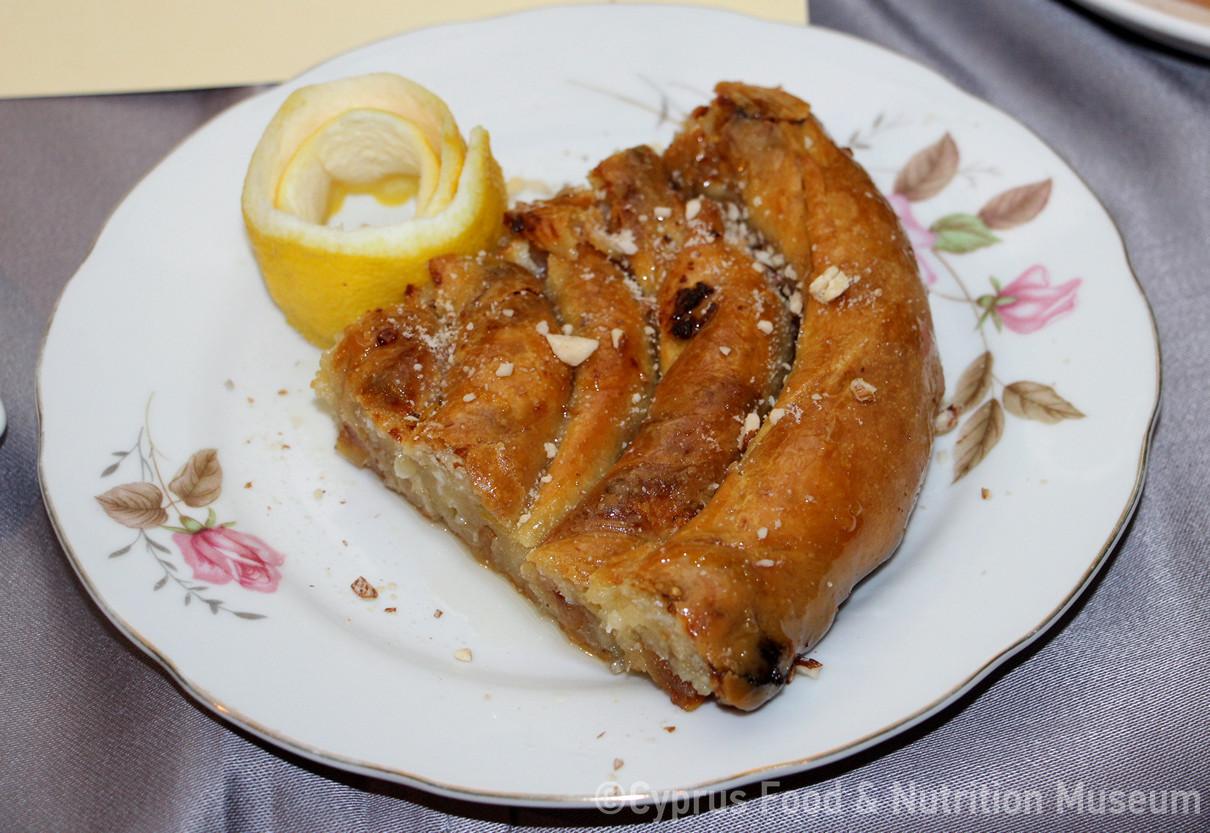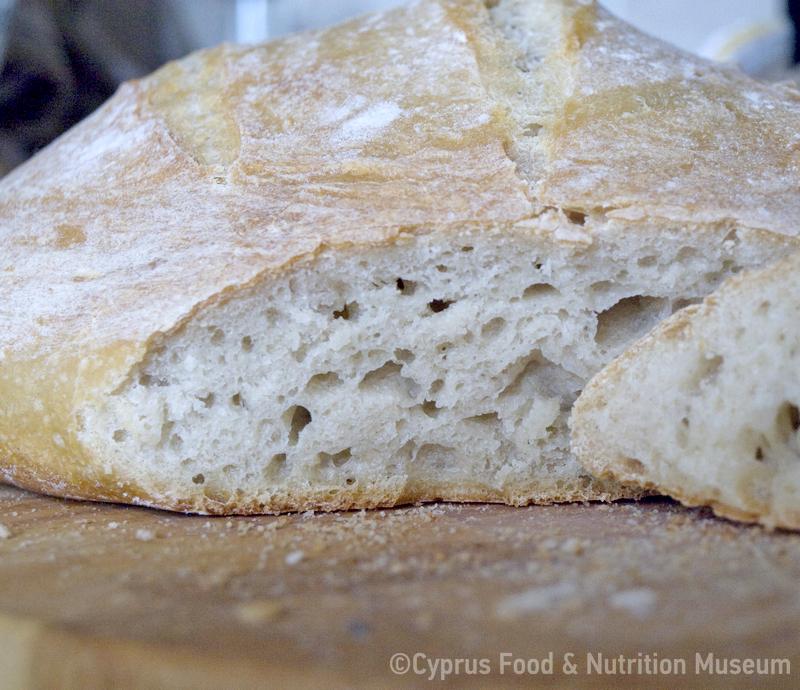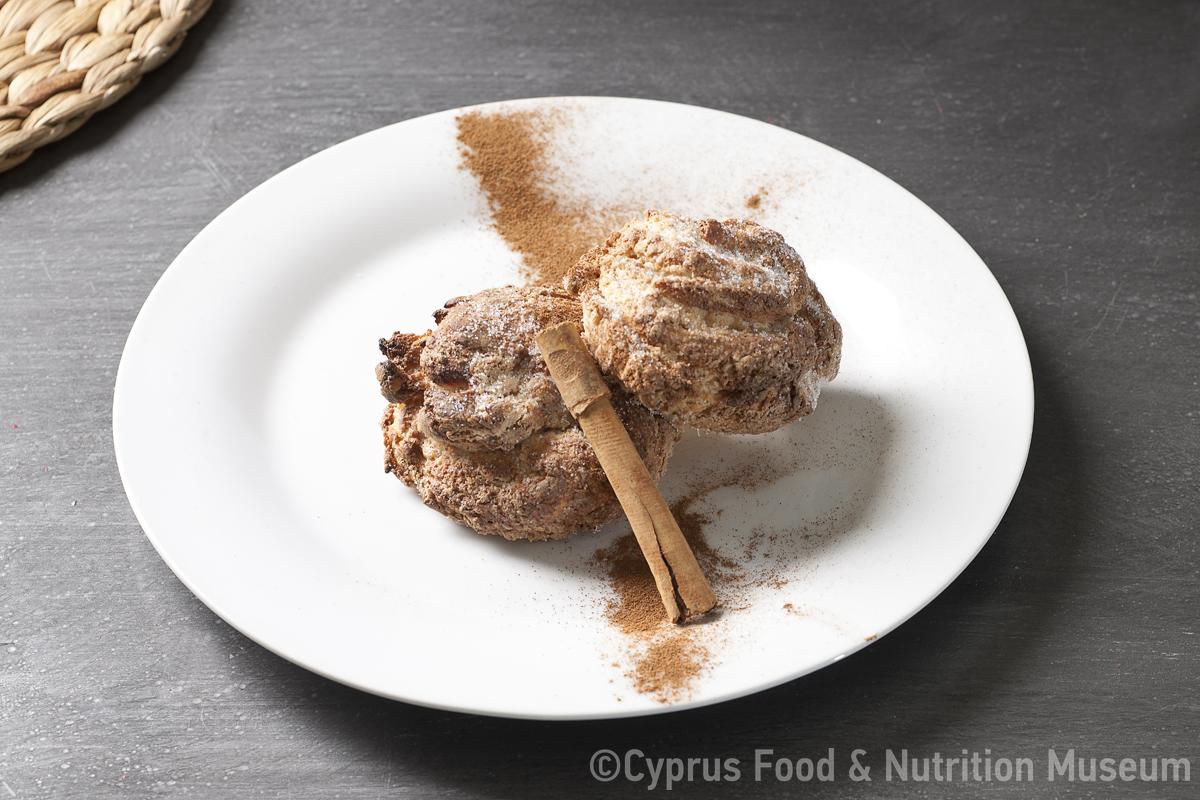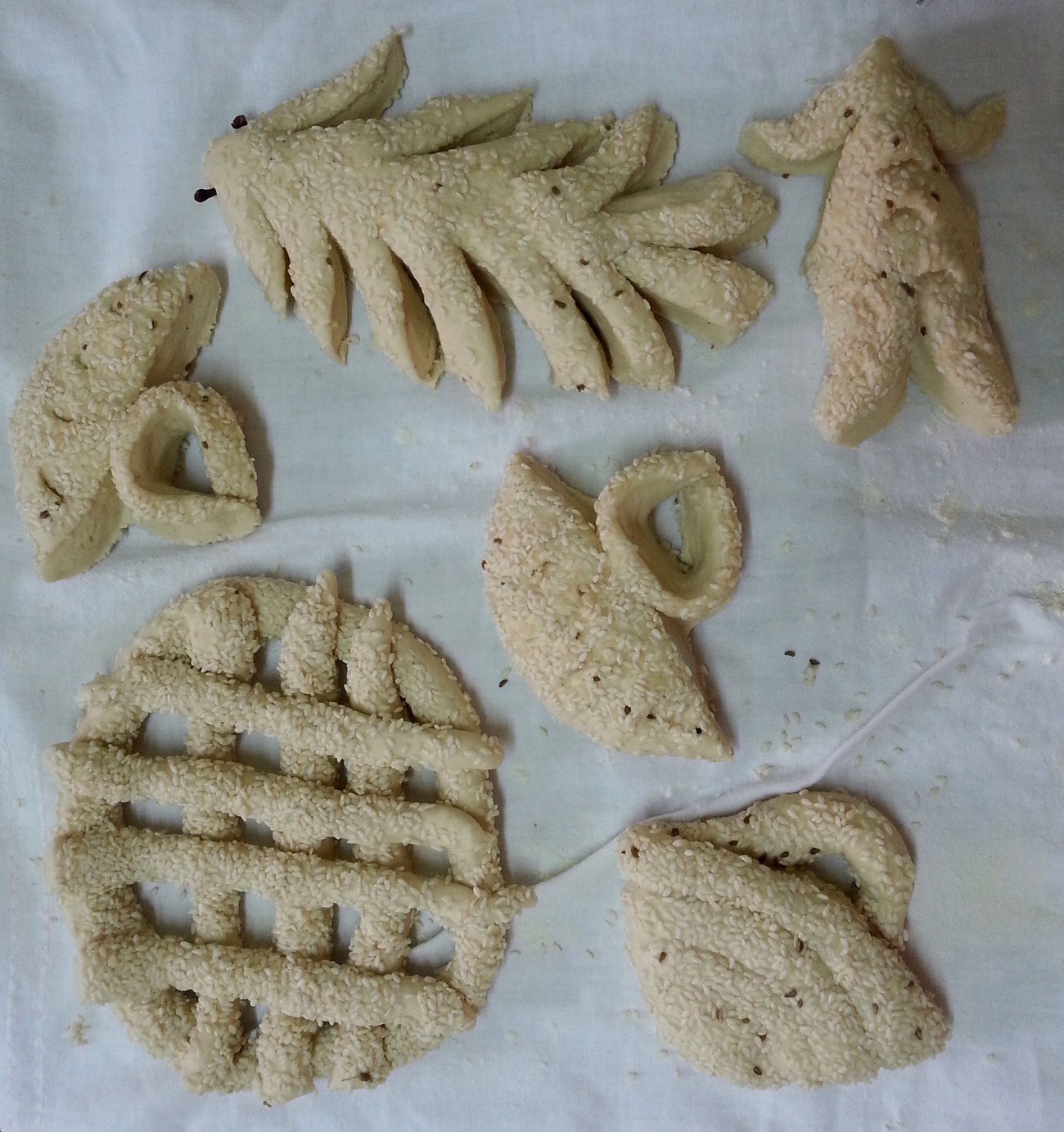Traditional, large Christmas bread. Gennopitta was usually decorated with raisins or various "plumia" (designs, patterns). The most characteristic 'plumí' was the cross, which was made with dough strips.
Name - Recipe
Πίτα Χριστουγέννων, Χριστόψωμο.
Version A
2 kg of flour
2 cups of sugar
3 tsp ground mastic
3 tsp cinnamon
1 tsp aniseed
2 tsp salt
1/2 cup oil
2 sachets of yeast or sourdough
1 kg sesame seeds
1 1/2 cup raisins
Version B
Sourdough (orange size)
Flour as much as needed
1 cup of sugar
½ tsp salt
1 tsp ground mastic
1 tsp cinnamon
1 tsp aniseed
1 tsp mahlep (mahlab)
1 cup of warm water
Sesame as much as needed
Version C
Flour hásiko (of better quality)
Semolina
Sugar
Ground cinnamon
Aniseed
Ground mastic
Vanilla
Version A
Soak the sesame seeds in hot water with a little lemon juice for a few minutes. Dissolve the sourdough in a little lukewarm water. In a basin, add the flour along with the salt, sugar, aniseed, cinnamon, and mastic and stir with a spoon. Add the oil and knead. Add the water and knead well until the dough is soft. Shape each gennopitta to the size of a round plate. Sprinkle each with sesame seeds. Using a blade or sharp knife score them in the outer ring and top them with a dozen or so raisins, pressing them down lightly. Place the genopittes in a warm place for about half an hour to proof. Bake them in the oven at 200 °C for an hour. ( Publication permission from: http://www.rizokarpason.com/ sintages1.htm)
Version B
In a basin, put warm water, salt and sugar and dissolve the sourdough (or yeast). Then add flour (as much as it takes) and the spices (mastic, cinnamon, mahlep, aniseed). Start kneading to form a dough (not as sti ff as the prosphora). Cover it and let it proof for 10 minutes. Cut the dough and give it a round shape. Then place it on a bed of sesame and aniseed and cover the dough all over. Transfer it back to the worktop and form again its round shape. Decorate on top with a cross (form it using a little bit of dough). Score it around with a knife. Line a tin baking dish with parchment paper and place the gennopitta. Preheat the oven for 15-20 minutes. Place the baking tray with the gennopitta in the oven and after 20 minutes put a small bowl of water on the bottom level of the oven under the baking tray to prevent the bottom of the gennopitta from drying out. At the half hour mark, remove the gennopitta from the oven and line the baking tray with a piece of aluminium foil placed under the parchment paper to prevent the bottom of the gennopitta from burning. Put the gennopitta back in the oven and reduce the oven temperature to half. In about 1 hour and 10 minutes it is ready. (Flourou K. Parpouna, 80 years old from Lysi)
Version C
Put all the ingredients into the basin where the sourdough is. Knead everything together well. Place the dough on the special table for making pasta ("triftosanion") and cut it to pieces. Each piece will form a gennopitta of the size of a round plate. Give each piece of dough the shape of a round bread. Sprinkle it with blanched sesame seeds and place 4-5 raisins on top. Place the gennopitta in a warm place to proof. Preheat the oven and bake the gennopittas for about 1 hour. (Publication by the refugee association 'O Karavas' (2002). Karavas, vol. 5, Nicosia).
Baking in the oven.
Functional and symbolic role
A festive bread.
Served on the Christmas festive table.
They are made for Christmas Day.
The gennopitta is placed in a basket (panéri) and cut on Christmas morning when people return from church. When Grandma Flourou was living in the village she would make it every Christmas. For the last 10 years she hasn't made it because Christmas cake has replaced it. She has been given the recipe by her mother and she has kept it unchanged to this day (Flourou K. Parpouna, 80 years old from Lysi).
Gennopitta is dedicated to the birth of Jesus Christ.
Additional information and bibliography
In every house, it was essential to prepare the gennopitta, the big Christmas bread. All other Greek regions have it as hristópsomo, a symbol of Christmas that decorates the festive Christmas table. Prepared with great care and using prime quality flour, sourdough and spices, gennopitta has a round shape and is decorated with various designs on top while a cross is a constant feature in the decoration. The means for decorating them are the same in almost all villages and are usually an inverted glass used to form circles, a clean comb, a knife, one or two forks joined together, scissors, a piece of reed, etc., which help to make the various decorations (ploumiá). Every housewife puts her art into decorating them as nicely as she can. Many women make them out of the first dough prepared for Christmas; in some villages they place the gennopitta from Christmas eve on the table with a bit of oil, a bit of wine, olives and food, so that Christ may bless them from the night before. Usually they cut the gennopitta in the morning, after mass, when the whole family gathers for the traditional Christmas soup (Kypri and Protopapa 2007, 266-7).
Publication of the Refugee Association "O Karavas" (2002). Karavas, vol. 5, Nicosia.
Publications 'Rizokarpason' (2010). Retrieved from: http:// www.rizokarpason.com/sintages1.htm
Kypri, T. and Protopapa, K. (2007). 'Traditional baking in Cyprus', in 'Ovens and traditional baking in Thrace, the Aegean and Cyprus' (Thrace-Aegean-Cyprus Programme, Thira 2007), 261-278.
Oral testimony: Flourou K. Parpouna, 80 years old from Lysi. Recording: Christiana Parpouna, October 2010. Edited by: Stalo Lazarou
Christiana Parpouna, Eleni Christou, Stalo Lazarou
